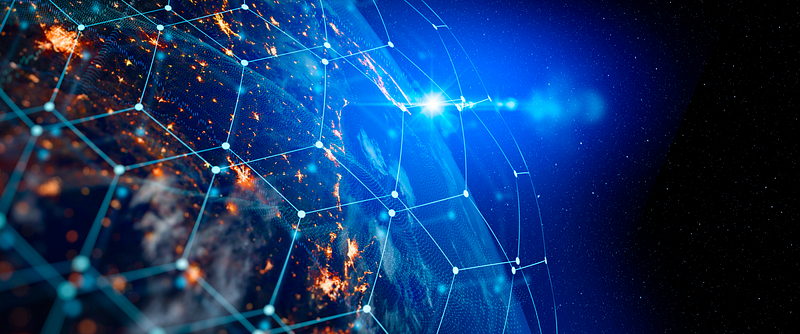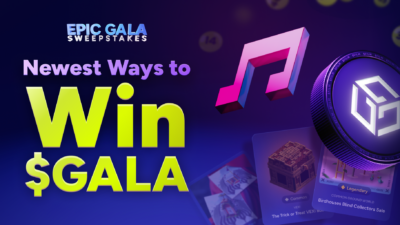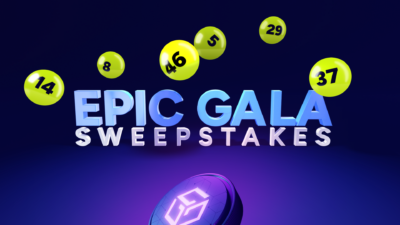
One of the central pillars of the Gala Games ecosystem is the Gala Game Node. As we begin to push forward into releasing new node updates to bring consensus voting online for node owners, so that they can help make choices to guide the ecosystem development, we also wanted to explain more of how the node system itself works currently. This post is also meant to address some questions commonly asked by people wondering whether they should join the Gala Games Node Ecosystem.
The BEST place to learn about the Gala Games Node Ecosystem is in our Discord, at GalaGames.chat. There, in the #gala-nodes channel, there is always a lively discussion of the node network.
How do I buy a node?
Nodes can be purchased here in GALA, ETH, or BAT. If you do not have an account yet, you will need to create one in order to see the prices in ETH and BAT, as they don’t show up until after an account has been created.
How do you set up a node? Does it need a server? Does it consume computing power?
Setting up a node is as simple as downloading the executable file and installing it on a Windows or Mac system. There is also a headless Linux version that is available for those with a higher degree of technical expertise. It consumes a small amount of computing power, but as it isn’t performing any major calculations or “mining” in the conventional sense of the term, it is VERY light. You are not required to use a server to run your node, and it doesn’t require powerful mining software to operate. That said, many members of the community find that it works well to to deploy their nodes on virtual private windows servers, as that makes it more likely that they stay up 24/7.
How often are rewards distributed and who distributes them?
Rewards are distributed daily at about 02:15 UTC time. The distribution is handled by a provably random distribution algorithm, which you can read more about here: https://gogalagames.medium.com/gala-games-nodes-resume-nft-distribution-d5de76d9b75a
A short version of this process can be found here:
The item distribution will run at 2:15 GMT each day. The first significant thing it does is query for all eligible nodes. The query sums up the amount of time it was online the previous day (00:00 GMT to 23:59 GMT). It then filters out any nodes that weren’t on at least 6 hours and groups the remaining nodes by the node’s user id and then looks up how many licenses each user has. If a user had more nodes online than they have licenses, it will filter out the extra nodes so the max eligible nodes a user can have is the number of licenses they have. It saves this list in memory and then creates a list of hashes using the Daywiss Provable library.
That library creates a seed from which to generate the first hash. We use the UUIDjs library to generate a uuid to use as the seed for each of the eligible nodes. The library creates sha256 hashes starting with the seed and then hashing the previous hash until it has the correct number of hashes. It creates this list backwards so the hash of the seed is the last hash in the list. It also means that if you take a sha256 of the 5th hash in the list, it will equal the 4th hash in the list. The provable library uses these hashes to get a random 32 bit integer by splicing 8 characters of the end of the hash which gives you a 32 bit base-16 number.
The distributor then gets the items to distribute from the list provided by the game developers. These records include how many items go to the node network. It then iterates over the number of items that go to the node network. For each iteration, it gets the next hash in the list and gets the 32 bit integer for that hash. It then uses RandomJS to get a reproducible random number in a given range using that 32 bit integer. The range we’re trying to get a number in is 0 and the number of eligible nodes left in the list — 1. We use this number as the index to pull out of the list of eligible nodes and assign the item to this node. It then removes the node from the list and continues to the next iteration. If the list to pull from is empty, it repopulates with the entire list of eligible nodes and generates a new list of hashes using the last hash as the seed.
The assignments for each item are sent to each users treasure chest. The list of hashes, selections for each items and list of node Ids (sha256 of machine guid) are then saved to s3 which can be used to reproduce the distribution and verify randomness. This will be made public for inspection shortly following the distribution in the app.gala.games distribution dashboard.
This topic has been covered in depth by Galabase.io, a community-driven project dedicated to assisting in the development of the Gala Games ecosystem.
Can you explain the node pricing?
The price of the nodes increases by $100 for every 100 nodes sold, with the last 100 nodes out of 50,000 “Founder’s Nodes” available being sold for approximately $33,000*. It is planned that these licenses will eventually be converted to NFTs, which would make them able to be traded on the secondary market, That said, we do not consider the nodes an investment and have never issued them as such. The only reason to get a node is to help support the growth of a decentralized ecosystem based around the ethos of giving gamers freedom and ownership of their own assets. As node owners support the network, they receive GALA and NFTs as a reward for their support.
*This information is no longer valid as written. Please check more recent articles for updated information.
Can you explain the Daily Distribution?
In the daily distribution, GALA and NFTs may be added to your Treasure Chest. These items and GALA do not exist on a blockchain when they are simply in your treasure chest, and you must mint them in order to write them to the blockchain. This “mint-on-demand” model enhances the decentralized nature of the network as it does not depend on any single entity to provide ETH gas fees for the whole network. In the long run, we will be transitioning to a multi-chain system, which will enable you to choose which chain you would like your NFTs to exist on. GALA itself will remain an ERC-20.
There are several ways to earn points in the distribution system.
- Personally run a licensed node — 1 point (must run for at least six hours between 00:00 UTC and 23:59 UTC)
- Team members run a licensed node — 0.1 point (*team goes two levels deep and users must run their nodes for at least 6 hours between 00:00 UTC and 23:59 UTC)
- A direct referral purchases a node — 10 points
These points are tallied up at the end of the day, and used to calculate the numbers for the Daily Distribution. The NFTs are distributed ONLY to those who operate nodes, but GALA is split between all points proportionally.
*This information is no longer valid as written. Please check more recent articles for updated information.
How much GALA is distributed per day?
GALA is added to a distribution ledger daily for anyone who qualifies for distribution points. The qualifications are designed to promote supporting the network, playing the games and sharing the games on the network. There will be a total of 50 billion GALA created. 25 billion GALA tokens will be distributed the first year (68,493,150.68 per day) and each year the number of GALA distributed will be halved.
Daily Distribution Schedule:
- July 22, 2019 — July 21, 2020–68,493,150 $GALA
- July 22, 2020 — July 21, 2021–34,246,575 $GALA
- July 22, 2021 — July 21, 2022–17,123,287 $GALA
- …halvings continue annually…
The total amount of GALA rewards earned by node operators can be seen here: https://app.gala.games/distribution/
The current daily distribution plan will distribute 25% of all minted GALA tokens to the Daily Distribution pool. The pool of qualifying recipients will be awarded a share proportionate to their earned points for that day.
In addition to receiving points which count in the daily distribution, node owners also have the ability to participate in governance votes which steer the direction of development and gameplay in game titles produced by Gala Games and the overall trajectory of the ecosystem.
What happens when there is no more GALA to distribute?
The long-term vision for the Gala Games Node Ecosystem will include multiple game studios, each working on multiple games, and creating a steady stream of NFTs which will get dropped to the node network. In addition to that, the nodes themselves will serve a vital role in supporting the ecosystem, with an economic model built out to incentivize the network and keep it stable. In the long-run, this would result in GALA being distributed to the node network in lieu of centralized systems, as the node network will ideally be supplying the computational power and storage needed to keep the network stable. The details of this are still being discussed and modeled.
What is next for the Gala Games Node Ecosystem?
Our roadmap for future Gala Games Node development may include some or all of the following:
- Adding a consensus mechanism (done, pushing in next update)
- Moving all in game item authentication to the nodes
- Moving all game API infrastructure to the nodes
- Processing all team transactions on the node of team leader
- Totally decentralized governance, with a blockchain-based upvoting/downvoting/consensus mechanism





